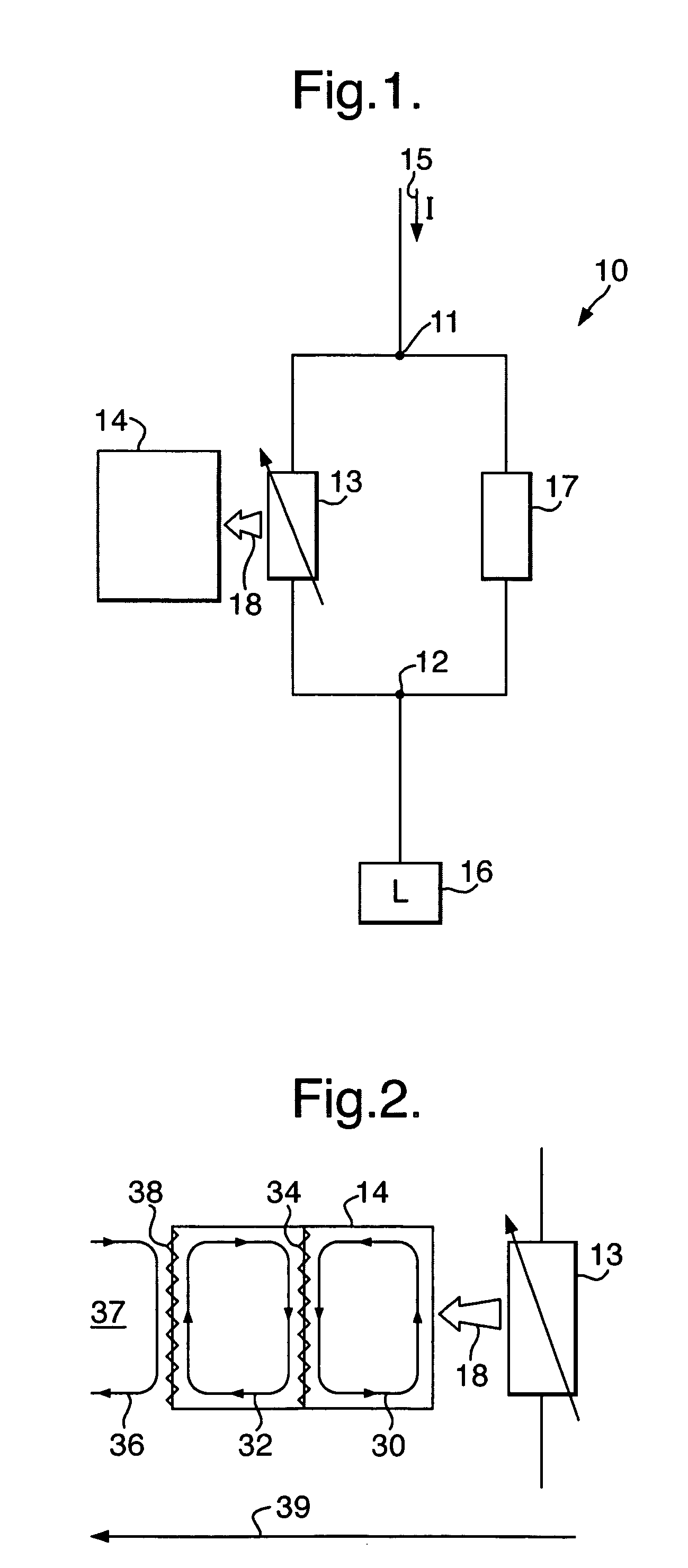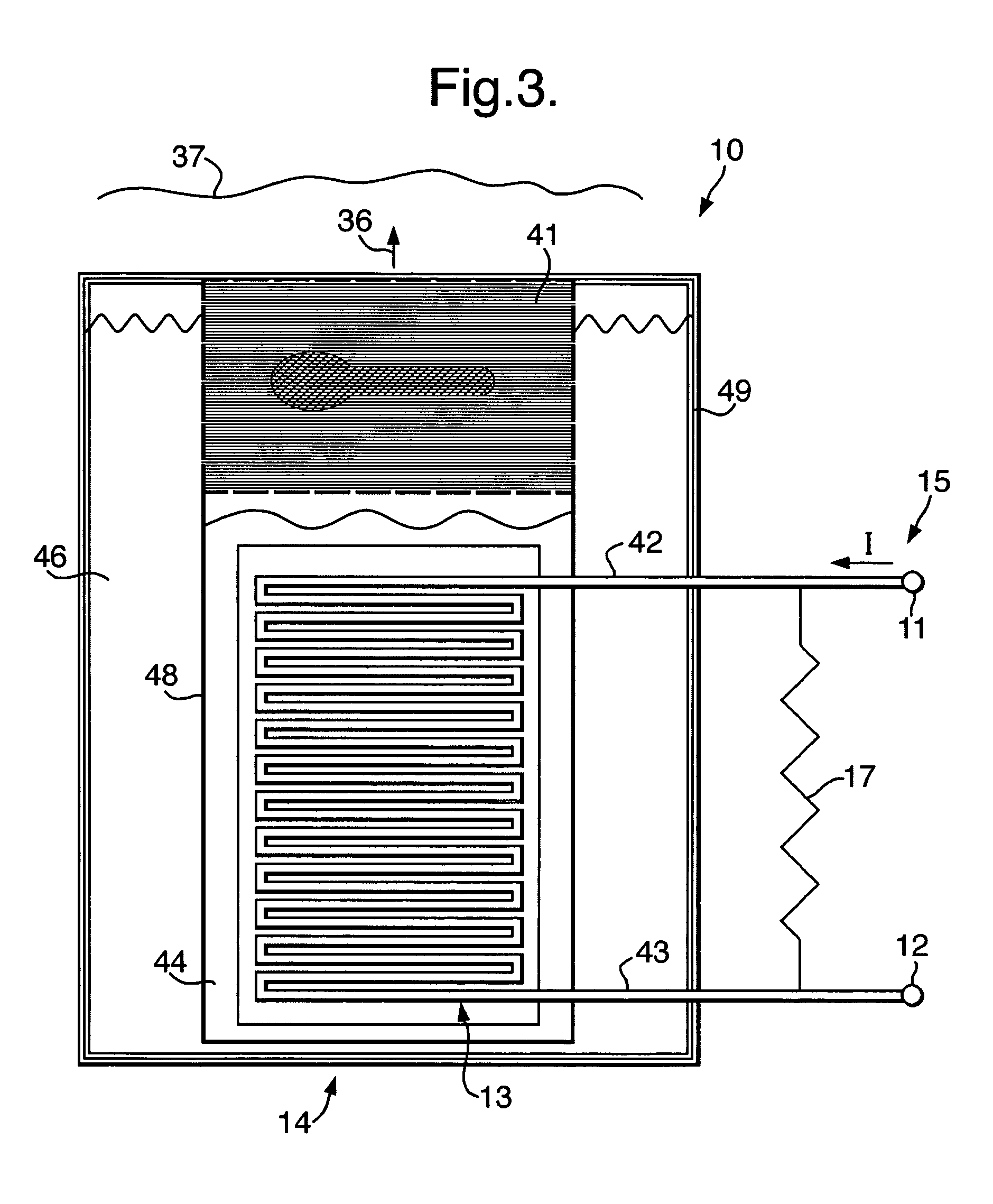Fault current limiter
- Summary
- Abstract
- Description
- Claims
- Application Information
AI Technical Summary
Benefits of technology
Problems solved by technology
Method used
Image
Examples
Embodiment Construction
[0023]The figures illustrate a fault current limiter 10 comprising: an input node 11; an output node 12; a variable impedance element 13 coupled between the input node 11 and the output node 12; a multi-cycle refrigeration system 14, comprising a first coolant cycle 30 for cooling 18 the variable impedance element 13 and a second coolant cycle 32, thermally coupled 34 to the first coolant cycle 30, for cooling the first coolant 44, wherein the variable impedance element 13 comprises Magnesium Diboride.
[0024]In more detail, FIG. 1 illustrates a schematic circuit diagram of a fault current limiter 10 for limiting a current I 15 provided to a load 16 when the current I exceeds a threshold value. The fault current limiter 10 comprises a variable impedance element 13, an input node 11, an output node 12, a multi-cycle refrigeration system 14 and a shunt resistor 17. The variable impedance element 13 is electrically connected between the input node 11 and the output node 12. The resistor ...
PUM
 Login to View More
Login to View More Abstract
Description
Claims
Application Information
 Login to View More
Login to View More - R&D
- Intellectual Property
- Life Sciences
- Materials
- Tech Scout
- Unparalleled Data Quality
- Higher Quality Content
- 60% Fewer Hallucinations
Browse by: Latest US Patents, China's latest patents, Technical Efficacy Thesaurus, Application Domain, Technology Topic, Popular Technical Reports.
© 2025 PatSnap. All rights reserved.Legal|Privacy policy|Modern Slavery Act Transparency Statement|Sitemap|About US| Contact US: help@patsnap.com



